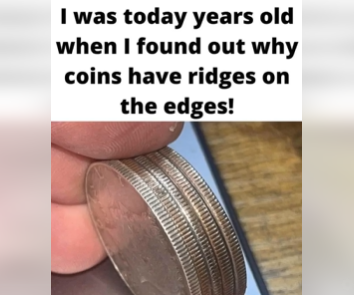Quarters’ ridged edges (reeds) aren’t decorative but a centuries-old anti-fraud measure. In the 17th century coin clipping—shaving silver
from edges—was common; clipped coins looked intact but lost metal, threatening economies. Sir Isaac Newton, Warden of the Royal Mint in 1696,
introduced reeded edges so shaving would be obvious: clipped coins show broken grooves. Newton even prosecuted counterfeiters,
restoring trust in currency. Today dimes, quarters, and half-dollars retain reeded edges despite no longer being silver,
serving three purposes: security (ridges are hard to replicate and let banks and vending machines detect fakes via edge sensors),
accessibility (tactile differences help visually impaired people distinguish denominations), and tradition/consistency
(ridged coins preserve familiar sound, feel, and handling). Pennies and nickels are smooth because they historically
lacked precious metal, so clipping wasn’t an issue. Yet reeding survives as a nod to history and practical design.
These ridges also help machines and people quickly recognize denominations in low-light or noisy settings,
preserving usability even as currency evolves toward digital forms, and tactile reassurance. Next time you run your thumb along a coin’s edge,
you’re feeling 300 years of anti-fraud innovation, accessibility thinking, and monetary tradition packed into your pocket.
